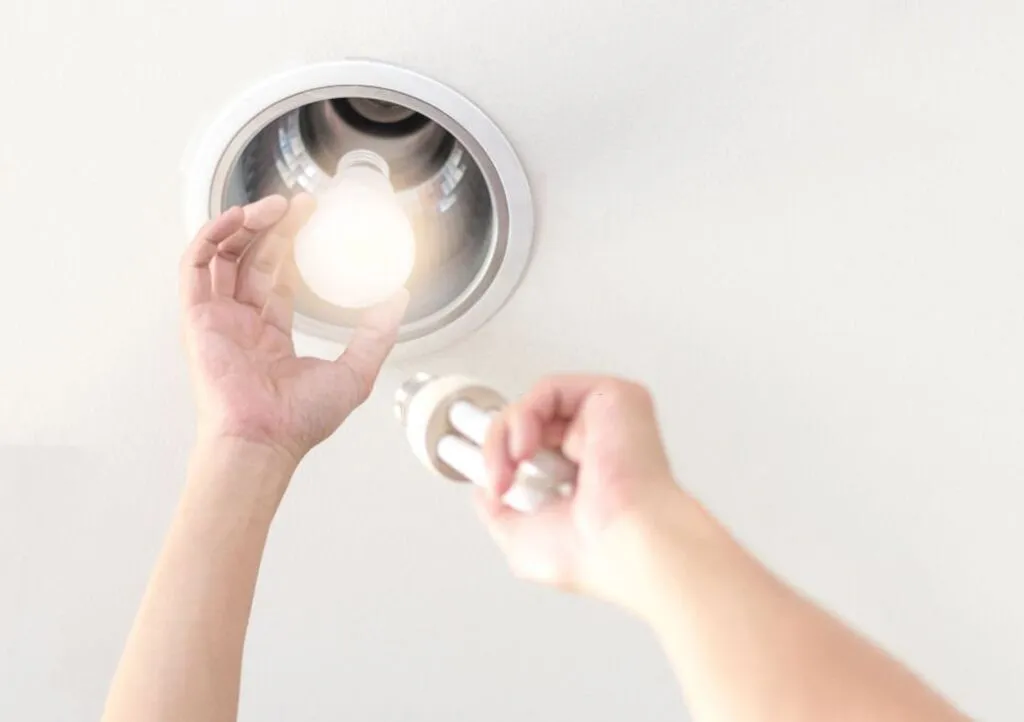Lights brighten rooms and help everyone move around safely. When they stop working properly, daily tasks become more difficult. Instead of guessing the cause, inspect the issue carefully and address it early. Learning how to handle common lighting problems saves time, avoids more damage, and keeps your home safe. This blog guide walks you through simple ways to identify and fix lighting issues. If the problem persists, professionals offering light repair services in Singapore can resolve it quickly.
1. Light Bulbs Keep Burning Out
Bulbs that fade or fail too quickly often indicate an underlying issue. Fixing the root cause helps bulbs last longer and reduces waste. Take the time to identify what is causing the problem.
Reasons bulbs stop working:
- Using a bulb that draws too much power from the socket overheats the connection
- Loose wires inside the fitting disrupt the current and cause failure
- Worn-out switches jump current back and forth and break the bulb
Start by changing the bulb. Twist it firmly into place. If that doesn’t work, check for worn-out wires or faulty switches and tighten the connections. Quick fixes now can prevent bigger problems later.
2. Lights Flicker Often
Flickering lights twitch, blink, and confuse the eyes. If the flickering continues, something deep in the wiring or current may need fixing. Look beyond the bulb when this happens.
What causes flickering:
- A bulb installed loosely in the socket rattles when switched on
- Uneven voltage bounces through wires and shakes the bulb's strength
- Wires inside the wall might fray or bend, blocking full power flow
Tighten the bulb first. If the problem persists, use a tester to track voltage swings. Repair or replace old wires and ensure every contact point holds steady.
3. Light Switches Feel Warm or Buzz
A warm switch or a soft buzz often signals trouble. Switches should remain cool and quiet. If they heat up or hum, they may be carrying too much current or have internal damage.
Why switches misbehave:
- Heavy current strains the circuit and heats the switch body
- The switch itself wears down and clicks or buzzes while passing power
- Wires behind the switch may touch or sag over time
Switch off the main power before opening the panel. Swap in a new switch if parts look bent or discoloured. Warm switches should never go unchecked.
4. Some Lights Don't Work at All
When some lights stay off while others still glow, the problem hides somewhere deeper than the bulb. Scan all parts of the setup, not just the fixture itself.Why lights fail:
- A breaker may have tripped from overload
- Sockets inside the wall could have cracked or broken springs
- Wires tucked in the ceiling might have slipped from their place
Open the breaker box and flip the switch back. If nothing changes, unmount the fixture and test with a voltage tool. Replace old sockets or call in an expert to review wiring paths.
5. Bulbs Appear Dim or Weak
Dim lights drag the mood down. Even when switched on, they don’t reach full brightness. This often indicates weak connections or power loss along the circuit.
Why bulbs dim:
- A mismatched bulb doesn't pair well with the fixture type
- Dirt or grime inside the socket stops full power from reaching the bulb
- Inside the walls, wire ends may rust or break down over time
Use the correct bulb first. Wipe the socket clean. If the glow stays weak, bring in an expert to dig through the wiring or test the current's strength.
6. Light Fixtures Spark or Pop
Sparks from a light are not normal. Even a single spark should be taken seriously. Sparks occur when electrical current jumps across unintended paths, which can damage the system. Every spark has a reason—either the internal wires or faulty connections are touching the wrong components.
Always turn off the power and carefully unscrew the fixture. Check for dark marks or melted parts. Replace sparking lights immediately. If wire ends appear burnt or frayed, strip and reconnect them securely. A sparking light poses a risk to both your safety and your home.
7. Ceiling Lights Keep Going Off and On
Don't ignore if the ceiling lights click off and flip back on themselves. Something inside might be moving, heating, or breaking. These patterns often warn of deeper issues.
Causes of random on-off:
- Loose wires inside a socket can cause power to cut in and out with movement
- The wall switch is too worn and can't hold a steady flow anymore
- Heat from the bulb triggers a sensor that resets power automatically
Carefully touch the fixture to check for heat. If it gets warm quickly, change the bulb type. Next, test the wall switch. Often, replacing these parts resolves the issue without major repairs.
8. Safety First: Things to Avoid
Never touch wires or sockets without cutting the power first. Working with electricity requires caution. Take time to stay safe. Hurried fixes often cause more harm than good. Use rubber tools to check parts. Wear gloves when handling sockets. Always turn off power from the main panel, not just the switch. Look out for melted parts, burnt smells, or loose screws.
However, care builds safety. Never ignore warnings from buzzing, flickering, or hot fixtures. If the task feels risky, pause and get help. Careful repairs protect homes from fire or shocks.
9. When to Call for Help
Fixing lights can feel easy—until things go wrong. Knowing when to stop and ask for help prevents bigger problems. If the repairs don't work after a few attempts, seek expert assistance.
When to get expert help:
- Wires look burnt, melted, or chewed
- Sparks flash even after replacing parts
- Switches or sockets sting slightly when touched
Professionals provide light repair in Singapore that bring fast, safe, and smart fixes. Electricians carry tools to test current, secure connections, and restore lights to full strength without mistakes.
Conclusion
Lights that dim, flicker, or spark often indicate deeper problems. However, most lighting issues start with minor causes—a loose wire, an old switch, or an incorrect bulb. Learning to spot these signs early helps keep homes safe and well-lit. Every fix, from tightening a bulb to replacing a switch, enhances comfort and control. When DIY repairs aren't enough, professional service for light repair in Singapore can make all the difference. Well-functioning lights brighten rooms, lift moods, and fully allow you to enjoy your space.

